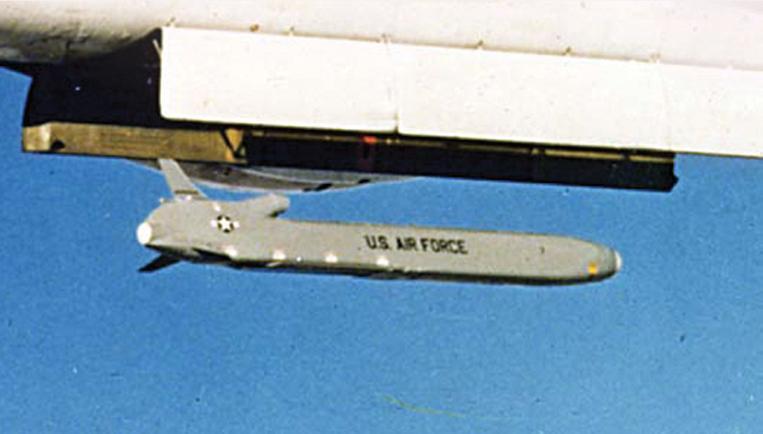
Lockheed Martin completed the preliminary design of its candidate for the Long Range Standoff (LRSO) cruise missile six months before the U.S. Air Force’s decision to award the $4.5 billion program to rival Raytheon Technologies, the service said on April 20.
The Air Force is now closing out Lockheed’s $900 million contract for technology maturation and risk reduction (TMRR) nearly two years early, eliminating any chance of a competitive bidding process for the engineering and manufacturing development (EMD) contract, the Air Force said in emailed responses to Aerospace DAILY.
The Air Force quietly announced the decision late April 17 to continue with Raytheon as a source for the AGM-86B replacement, but the announcement went unnoticed until early April 20.
The original Air Force announcement was careful to avoid painting Lockheed’s withdrawal from the LRSO competition in an unflattering light for the company. The decision to continue with Raytheon was “not a downselect ‘per se,’” said Elizabeth Thorn, the Air Force’s system program manager for the nuclear-armed weapon.
Lockheed said it would continue offering its expertise on sensors, nuclear certification and nuclear surety to support the LRSO program, but its participation is not automatic.
In the absence of an ongoing TMRR contract, the Air Force must award a separate contract to Lockheed for any further support work for LRSO, the Air Force said in emailed responses. “Those efforts would follow the normal Air Force contracting process,” a spokeswoman said.
A final downselect for LRSO was not expected until the second quarter of fiscal 2022, the scheduled date for the EMD award. The military often closes the competitive phase of an acquisition program after a preliminary design is complete.
Raytheon completed a preliminary design review for LRSO in November 2019, the Air Force said. The company is still working on the 54-month TMRR contract awarded in August 2017, but its possible the transition to the EMD phase could happen sooner than fiscal 2022.
“Currently, the Air Force is continuing the TMRR phase as planned,” the Air Force said. “Plans are underway to determine if any acceleration might be possible.”






Comments